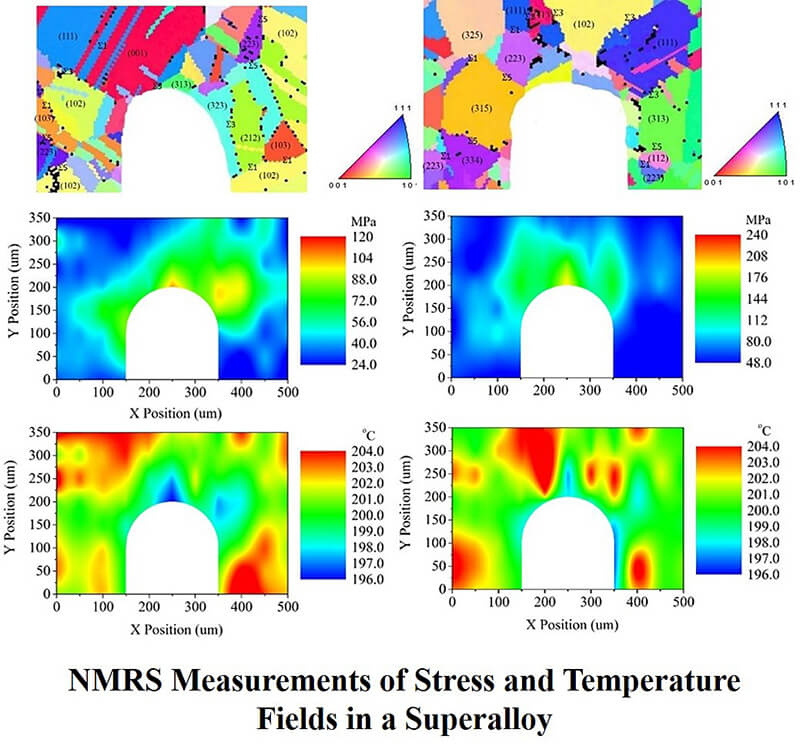November 8, 2018
Titanic failure: Purdue aerospace detection technology designed to prevent catastrophic events in energy and extreme environments
 Purdue University researchers have created aerospace detection technology to try to prevent catastrophic events such as the Titanic disaster. (AP Photo)
Purdue University researchers have created aerospace detection technology to try to prevent catastrophic events such as the Titanic disaster. (AP Photo)
WEST LAFAYETTE, Ind. – Could new technology from Purdue University researchers have helped save the Titanic? Engineers from Purdue have developed technology to help prevent catastrophic failures involving nuclear, energy and other materials in extreme environments.
“Our advancements in temperature measuring and stress sensing can potentially save lives and significantly reduce costs,” said Vikas Tomar, a professor of aeronautics and astronautics, who led the research team. “Our Nanomechanical Raman Spectroscopy technology will allow for safer structures by enabling simultaneous time-dependent measurements of chemical, thermal and mechanical changes in structures and materials undergoing mechanical loading in extreme environments.”
The Purdue analytical technology is unique in its approach to seeing if there are changes in materials in environments with very high temperatures or other potentially dangerous factors.
The Purdue approach focuses on detecting stress as a predictor of failure, rather than relying on damage detection to try to predict potentially catastrophic failures of these materials in sometimes extreme and dangerous situations.
The new technology uses advanced sensors, along with data science and machine learning elements, to detect and predict failures within the materials. Purdue’s technology could be used for nuclear materials, lithium-ion batteries, metals and biological and energy materials, all of which are used in situations with extreme temperatures and shock velocities.
 New Purdue University aerospace detection technology uses advanced sensors, along with data science and machine learning elements, to detect and predict failures within certain materials. (Image provided by Vikas Tomar)
Download image
New Purdue University aerospace detection technology uses advanced sensors, along with data science and machine learning elements, to detect and predict failures within certain materials. (Image provided by Vikas Tomar)
Download image
“Current practices in damage tolerance are fine if damage is widely distributed,” Tomar said. “If the damage is localized and not widely distributed, such as the hairline crack in the Titanic, you must have technology like ours that uses stress sensing to predict if damage is going to be catastrophic. The situation is even more complicated for materials in extreme environments.”
Their work aligns with Purdue's Giant Leaps celebration, acknowledging the university’s global advancements in space as part of Purdue’s 150th anniversary. This is one of the four themes of the yearlong celebration’s Ideas Festival, designed to showcase Purdue as an intellectual center solving real-world issues.
“Our technology changes the paradigm from damage sensing to stress sensing,” Tomar said. “Such a paradigm shift will enable safer structures, especially the ones that are operating in extreme environments. I see our technology as an enabler for opening up a new multibillion-dollar industry.”
The Department of Defense recently awarded the team a $508,000 United States Government competitive Defense University Research Instrumentation Program grant mechanism to make this technology more accessible to extreme environment measurements such as shock loading, nuclear irradiation and rechargeable battery explosions.
Tomar and his team worked with the Purdue Office of Technology Commercialization to patent the technology. They are looking for partners to continue developing their system and to license it.
About Purdue Office of Technology Commercialization
The Purdue Office of Technology Commercialization operates one of the most comprehensive technology transfer programs among leading research universities in the U.S. Services provided by this office support the economic development initiatives of Purdue University and benefit the university's academic activities. The office is managed by the Purdue Research Foundation, which received the 2016 Innovation and Economic Prosperity Universities Award for Innovation from the Association of Public and Land-grant Universities. For more information about funding and investment opportunities in startups based on a Purdue innovation, contact the Purdue Foundry at foundry@prf.org. For more information on licensing a Purdue innovation, contact the Office of Technology Commercialization at otcip@prf.org. The Purdue Research Foundation is a private, nonprofit foundation created to advance the mission of Purdue University.
Writer: Chris Adam, 765-588-3341, cladam@prf.org
Source: Vikas Tomar, tomar@purdue.edu

